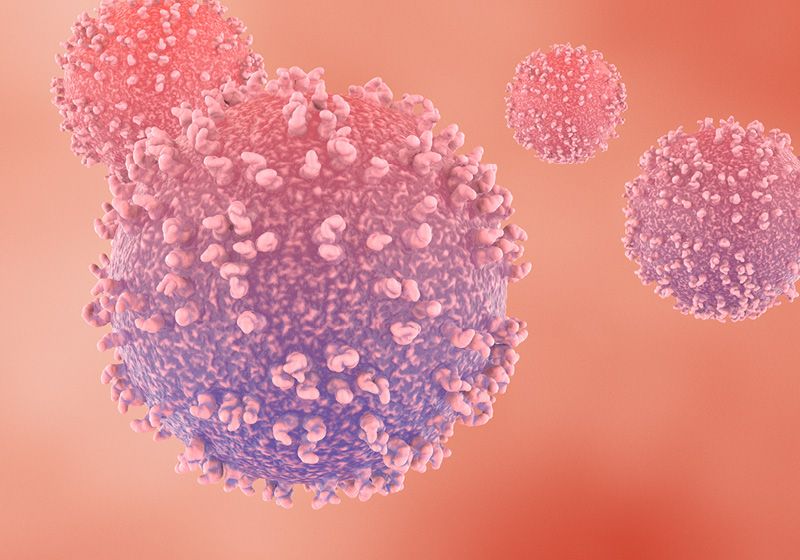Researchers homed in on what primes B cells to become autoreactive.
In the 13th century, unusual skin lesions resembling wolf bites led to the term “lupus,” meaning “wolf” in Latin. These symptoms also took the form of a butterfly across the face and to other parts of the body, hinting at a deeper, more complex condition. Centuries later, researchers provided evidence of lupus as an autoimmune disease, in which overactive T and B cells turn against one’s own body.
Upon activation, B cells undergo differentiation through the germinal center (GC) or extrafollicular (EF) pathways. Notably, those from the EF pathway are a prominent source of autoantibody production, but the mechanism behind their development from naive cells into this state is not fully understood.1 This motivated immunologist Michael Carroll at Harvard Medical School to pinpoint key factors that drive this process.
The team’s findings, published in Science Immunology, revealed that a subset of B cells with reduced expression of the complement receptor CD21 were more prone to developing into autoreactive cells.2 This behavior was also driven by an innate immune receptor on B cells, which has been associated with one of the most common forms of lupus, systemic lupus erythematosus (SLE), and autoantibody production. Together, these findings highlight molecular targets for suppressing the development of B cell autoreactivity.
Previous research has found that B cells that express low levels of CD21 are likely to differentiate outside the GC; instead, they commit to the EF pathway, where they proliferate into pathogenic autoantibody-secreting cells (ASCs).3 In addition, innate immune receptors such as the toll-like receptor 7 (TLR7) on B cells are associated with SLE and autoantibody production. Because of this, the researchers wanted to further investigate how these components interact.
The researchers monitored the development of donor B cells from both wild type and Tlr7-knockout mice injected into a mouse model of SLE. Through flow cytometry analysis, they observed that wild type B cells progressed into more mature antibody-producing cell populations over a seven-day period while the B cells from Tlr7-knockout mice did not. Instead, these cells lagged in cell division which suggests that TLR7 signaling is essential for B cell differentiation—particularly in the generation of ASCs.
Further analysis of the wild type B cells showed that as these cells proliferated, they downregulated CD21 expression. This downregulation occurred through CD21 binding to its endogenous ligands, thereby suppressing its own expression and priming the cells for EF differentiation into ASCs.
Based on this observation, the researchers hypothesized that disrupting the CD21-ligand interaction would prevent CD21 downregulation and reduce the production of autoreactive cells. Indeed, when the team treated naive B cells with an anti-CD21 blockade, the treatment reduced ASC formation.
These findings provide further insight behind EF autoantibody production and identify molecular targets for potential therapeutics in diseases such as lupus. “Our findings may extend to varied settings beyond autoimmunity, such as aging and infection, where similar B cell phenotypes have been documented,” the researchers wrote in the paper and a press release.

